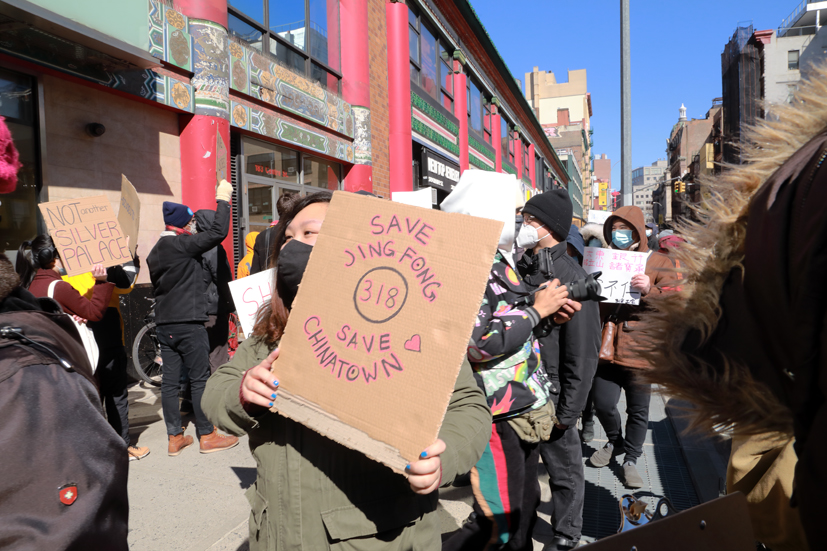BY DASHIELL ALLEN | Largely excluded from 9/11, Hurricane Sandy and COVID-19 recovery funds, Chinatown’s small businesses are fighting for their future.
A study recently released by the nonprofit Welcome To Chinatown and the consulting firm HR&A Advisors takes a deep dive into more than 20 years of challenges faced by the Lower Manhattan neighborhood, while identifying long- and short-term policy solutions.
The study includes a detailed analysis of Census and other government data, as well as a series of focus groups with local small businesses conducted earlier this year
For the purposes of the report, Chinatown is defined as the area largely east of Centre Street and south of Delancey Street included in the state’s $20 million Downtown Revitalization Initiative.
In the weeks after 9/11, the neighborhood was hit hard: Two subway lines skipped Chinatown for six weeks, and four months went by before phone service was restored, according to the study.
Additionally, the Federal Emergency Management Agency rejected 70 percent of loss claims made in Chinatown after 9/11, largely due to a lack of documentation. It’s estimated that of the roughly $500 million that the neighborhood’s business community lost in the following year, just $60 was received in grants and loans.
Twenty years later COVID struck, mirroring many of the same trends. An analysis of PPP loan data from the U.S. Small Business Administration found that workers in Chinatown received only 50 percent as many loans per job (one out of 20), compared to the citywide average of one out of 10.
Over all the neighborhood lost 26 percent of its jobs from 2019 to 2021, compared to 14 percent citywide. One well-known example of that trend was the closure of Jing Fong restaurant — in a building owned by landlord Jonathan Chu — in February 2021, the neighborhood’s last unionized dim sum parlor, employing 150 workers.
As of late last year, storefront visitation in Chinatown was still down 50 percent when compared to pre-pandemic levels. That effect could also be exacerbated by the two-decades-long closure of Park Row, which Welcome To Chinatown has advocated should be reopened.
Canal Street, one of the neighborhood’s major arteries, has one of the city’s highest vacancy rates at 57 percent.
Yet, despite those alarming numbers, large portions of Chinatown were largely excluded from COVID relief programs, given that they intersect with wealthier zip codes.
“These programs need to be evaluated, especially the criteria as to what we’re determining as low- or medium-income communities,” said Victoria Lee, the founder of Welcome To Chinatown and a Lower Manhattan Democratic district leader.
Chinatown’s residential demographics are also changing. The 55 percent AAPI (Asian American and Pacific Islander) community saw a 22 percent decline in its Asian population over the past decade. The neighborhood is also aging — in the same period it saw a 21 percent increase in residents age 65 and older.
Of the owners of the more than 120 small businesses that participated in Welcome to Chinatown’s focus groups, a majority cited rising rents, attracting enough customers and access to and cost of labor as their greatest challenges.
Many business owners struggle with the expectation that the neighborhood should be cheap, according to Lee, which leads them to stay afloat on increasingly thin profit margins.
A lot of longtime business owners are also facing the looming question of succession.
As Lee told The Village Sun, many owners, “may not want their kin to take on the business and the burdens that they have had to experience. It’s something that they have particularly felt over the last two years — the emotional toll and all the trauma that has taken — and it’s not something they want for the next generation. However, many of them are still operating their business because they’re not ready to let go — it’s their personal legacy.”
Lee, who has lived in Chinatown for the past decade and grew up visiting her grandmother in the neighborhood, added, “My dad was a small business owner, as was my grandfather, and it was never their desire to have my sister and I in a business. It’s not to say that doesn’t happen, but it’s less the norm.”
As a potential solution to the challenges of passing down legacy businesses, Welcome to Chinatown’s study offers the idea of creating worker-owned cooperatives.
“Is there an opportunity to create an investment fund that would then support buyouts and conversions of small businesses into worker-owned enterprises?” Lee said. “We don’t think it’s that far off because it’s happening already in the community.”
In fact, the idea was proposed by former Jing Fong workers back in March 2021. Lee points to the example of the newly formed Main Street Phoenix Project in Colorado.
The report’s other recommendations are to help businesses expand into higher-paying markets, for instance, by offering catering services and assisting older business owners in using technology.
(Just 3 percent of transactions in Chinatown were digital in 2020; 47 percent of businesses surveyed that had been open for more than 10 years cited difficulty using technology as a top concern.)
Other proposed solutions call for improving access to aid for navigating resources by providing in-person Mandarin and Cantonese translation services, and further simplifying the city’s small business regulations. Mayor Adams took some steps in the direction of the latter back in May by cutting dozens of fines on small merchants.
Several of the report’s proposals are also being considered as part of the ongoing Chinatown Downtown Revitalization Initiative. These include beautifying the police-barricaded Park Row to attract tourists from the Brooklyn Bridge to Chinatown, launching a Small Business Innovation Hub, and launching a “Meet Chinatown Local
Business” directory app.


Be First to Comment